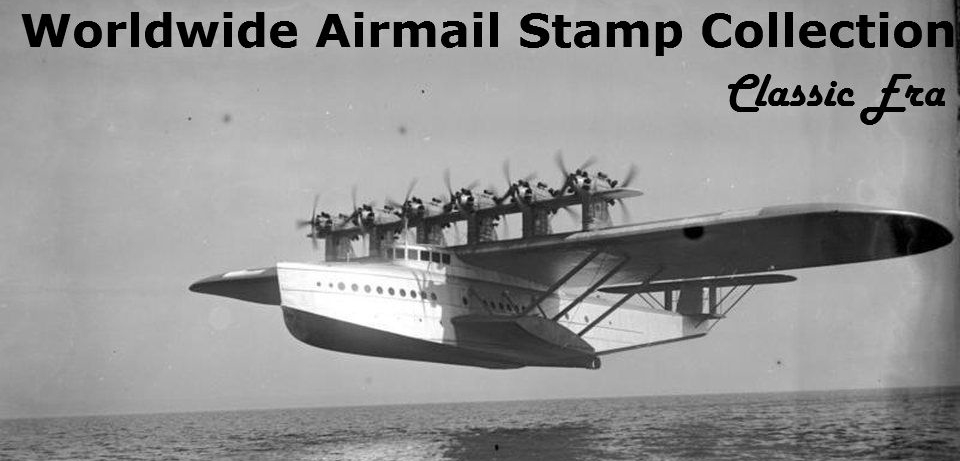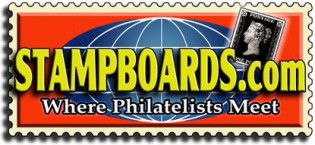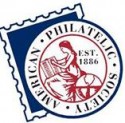[ezcol_1half]
Beginning in 1877, or maybe 1898, or perhaps 1912, the world was introduced to airmail stamps. It all depends on your definition of airmail, and of stamps.
The first actual airmail service was launched out of Paris in 1870-71. The Germans had encircled Paris during the Franco-Prussian War, cutting telegraph lines and blocking mail delivery. Parisians used balloons to communicate with the rest of the country.
During the siege, 66 unguided balloons were launched. Most succeeded in escaping the siege. These flights were known as ballon monté. They carried special cards, to reduce weight. Those are collected today, and are called ballon montés. However, these cards used everyday postage, rather than airmail stamps. So they won’t be found in this collection.
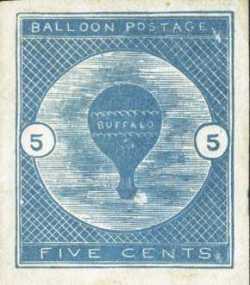
United States Scott CL1
Arguably the first airmail stamp was issued in the United States in 1877. It paid for carriage on the Buffalo Balloon flight from Nashville to Gallatin, Tenn. The stamp was privately designed and printed. Only 23 were flown. The postal authorities’ attitude toward the stamp is unknown; purists could argue that it does not rise to the level of even a semi-official stamp. Nonetheless, it paid for postage on a one-off flight.
The first stamps for continuing airmail service were issued in New Zealand. The problem is that the service used neither balloons nor airplanes. No, this was 1898, and the work was done by pigeons.
Mining had begun on the Great Barrier Island, and the only mail service was a weekly ship. Something better was needed. The answer was very thin sheets, called flimsies, attached to the birds’ legs.
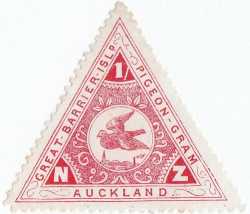
New Zealand Sanabria 6
Initially, no stamps were used. Privately printed stamps were added in 1898, becoming the first stamps dedicated to a scheduled airmail service. Eventually, a competing service was added, which also issued stamps. The pigeons were obsoleted in 1908 by an underwater telegraph line.
A scattering of airmail stamps appeared in the years before World War I. All were at best semi-official, with the often-grudging support of postal authorities. Probably the best known are the 1912 German stamps. They were issued for charity flights between various German cities. Mail was carried by an airplane, Gelber Hund (Yellow Dog), and the dirigible Schwaben.
However, this was not a regularly scheduled service. That had to wait [/ezcol_1half] [ezcol_1half_end]until May of 1918, when the United States issued a 24-cent stamp for a real airmail service.
Following the end of World War I in November 1918, airmail service spread rapidly. Many, many airmail stamps were soon available, and a collecting genre was born.
In the 1920s and ‘30s, airmail stamp collecting was hugely popular. Airmail stamp albums were issued, as was an excellent catalog published by Nicolas Sanabria. The fervor for airmail stamps continued through to World War II, despite the Great Depression.
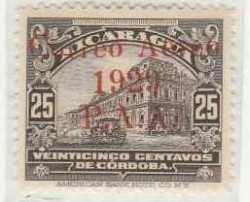
Nicaragua Scott C1
Even in those early days, certain countries issued airmail stamps by the bushel. That was especially true in Central and South America. Nicaragua alone issued 265 airmail stamps through 1940. Clearly, this was an easy way to make money. But the heavy issuance was a financial burden for collectors.
Things really got rolling after the war. Countries in the Soviet empire had little to sell to the West. Their currencies were not generally accepted in trade for Western products. So they had to use Western currencies to buy from the West. Stamp sales were a good way to earn Western currencies. But collectors typically did not appreciate that tax.
Countries elsewhere were also issuing gobs of stamps, many of them airmails. It all became a bit much. Plus, the early glamour of airmail had worn off. Once, the airmail world depended on brave pilots in flimsy airplanes. Now, large aircraft carrying mail as cargo were a routine sight. Collectors moved on to other pursuits.
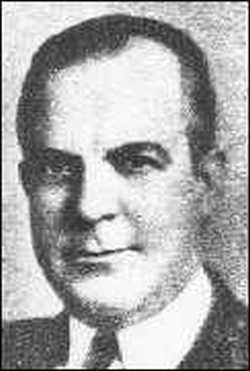
Nicolas Sanabria
Nicolas Sanabria died in 1945. His son, Nicholas, continued the airmail catalog, last publishing it in 1966. A truncated version appeared in 1972. Scott discontinued its airmail stamp album in the 1950s.
Today, collectors of airmail stamps are a rare breed. Still, a few of us soldier on.
This collection was started in 1994, limited to the early days through 1940. It will probably never be complete. Thousands of airmail stamps were issued between the wars. Countless more varieties found their way into collectors’ hands.
However, if you are interested in old airmail stamps, you’ve come to the right place. There are over 5,000 stamps in this collection, with more added regularly. I hope you enjoy viewing them.
–Ed Foster[/ezcol_1half_end]
